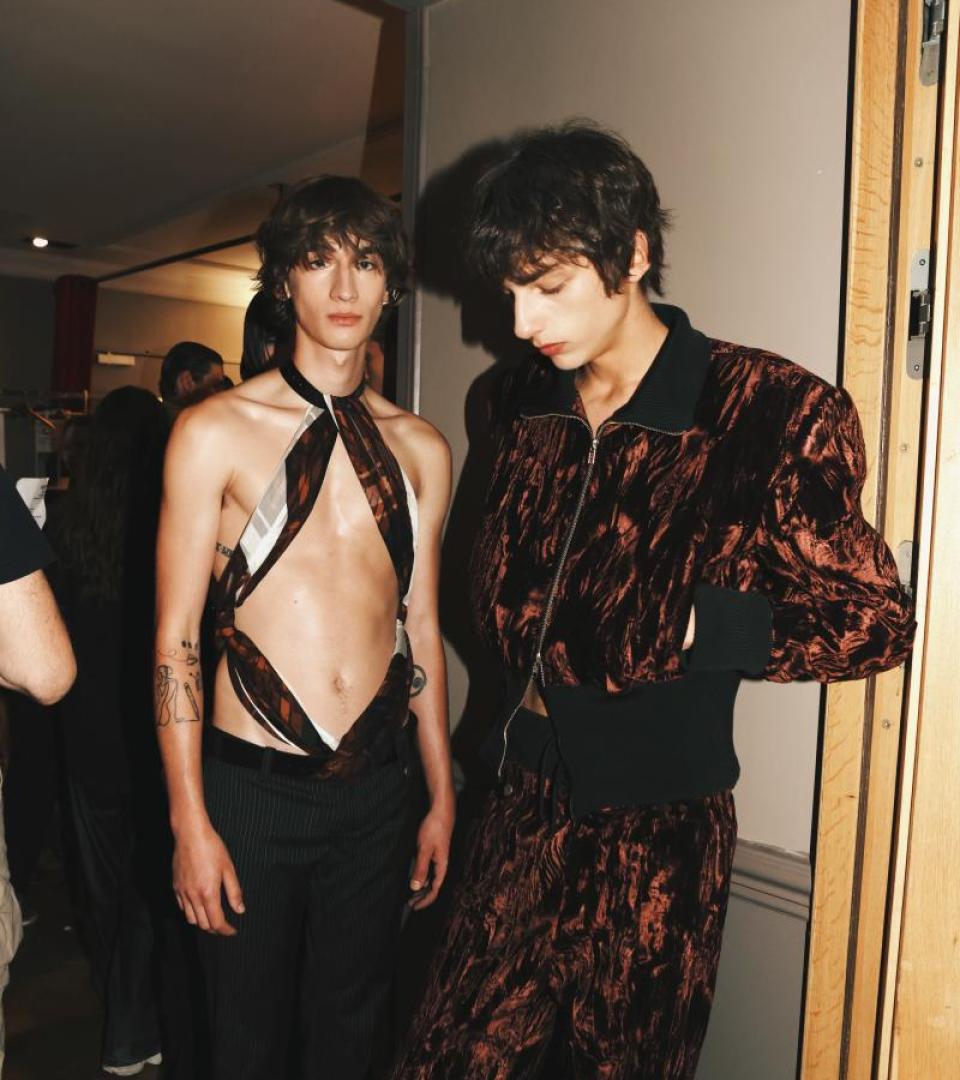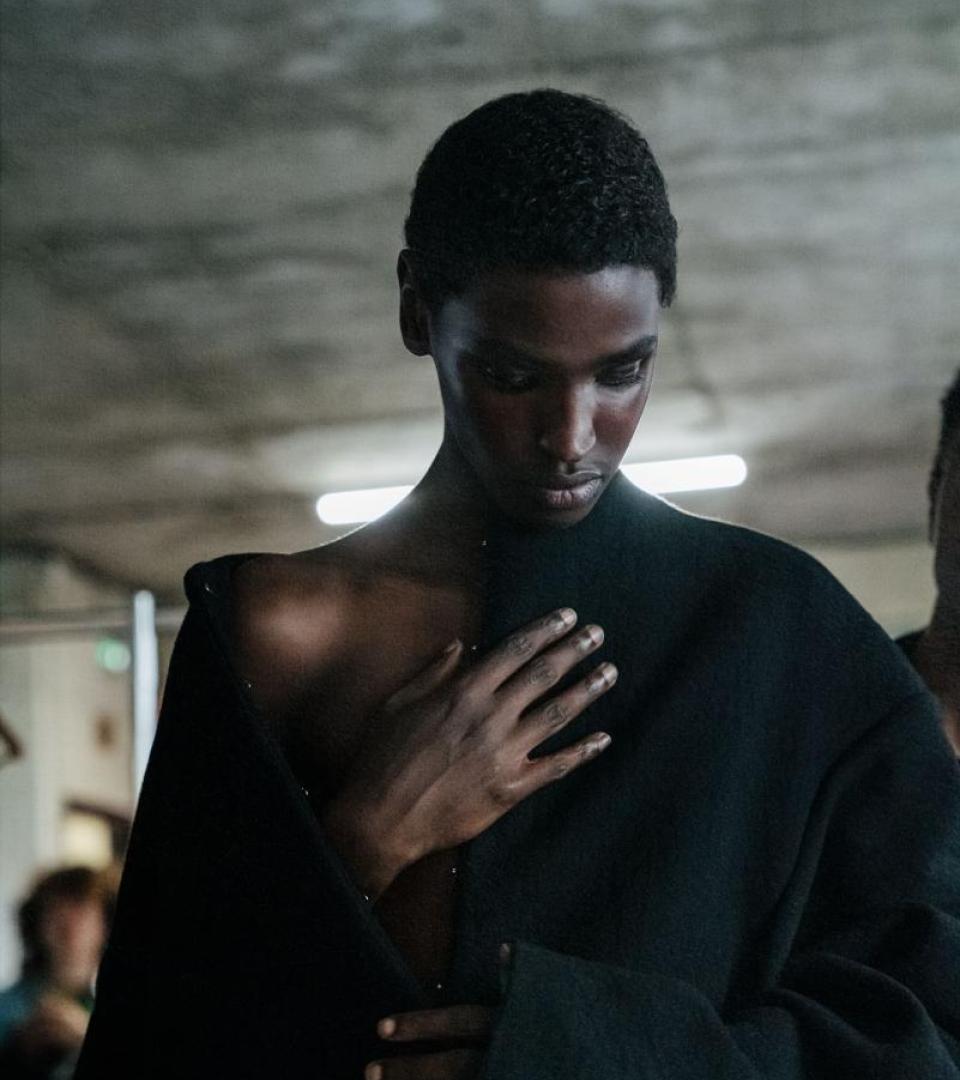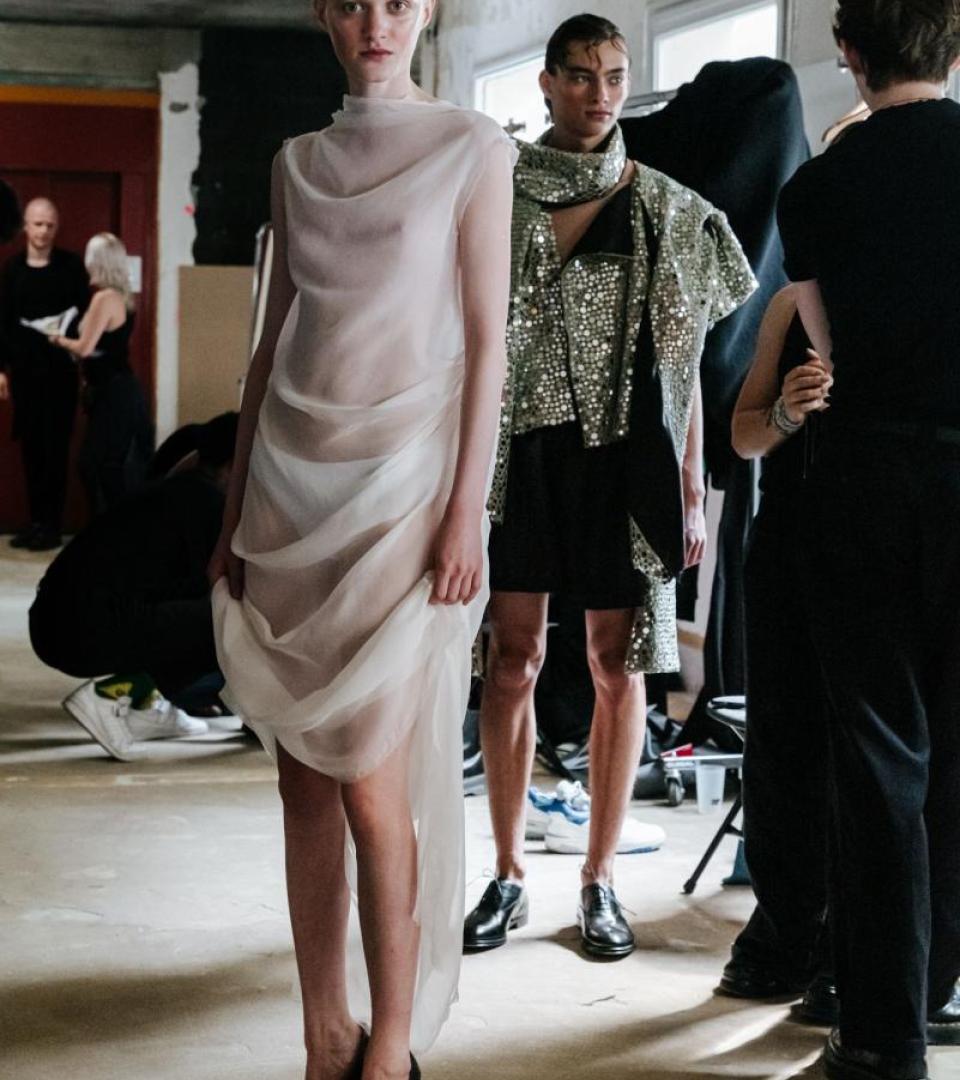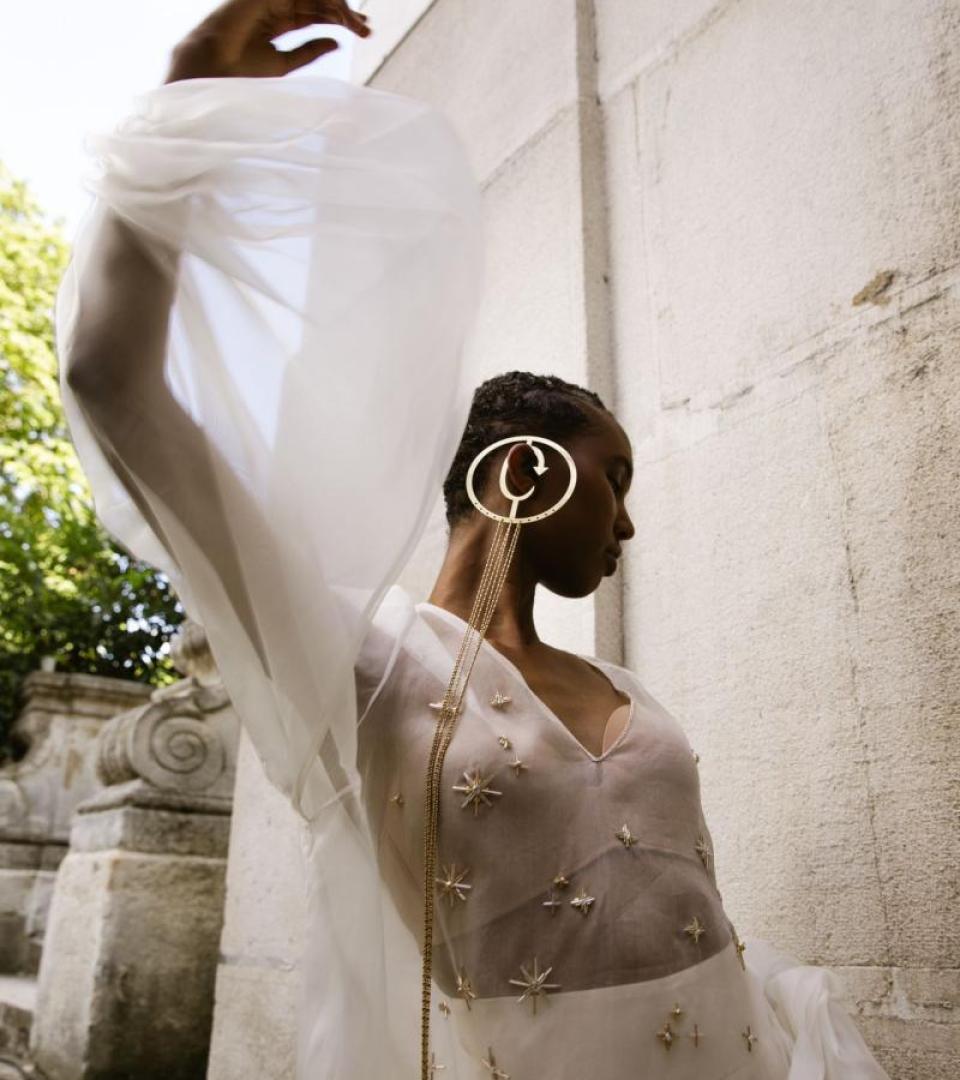Tribute to Pierre Cardin
Journalist and writer Théodora Aspart pays tribute to the greatest couturier of the 20th century, whose name became one of the symbols of the era and opened the way for innovation and radical changes in the fashion industry.
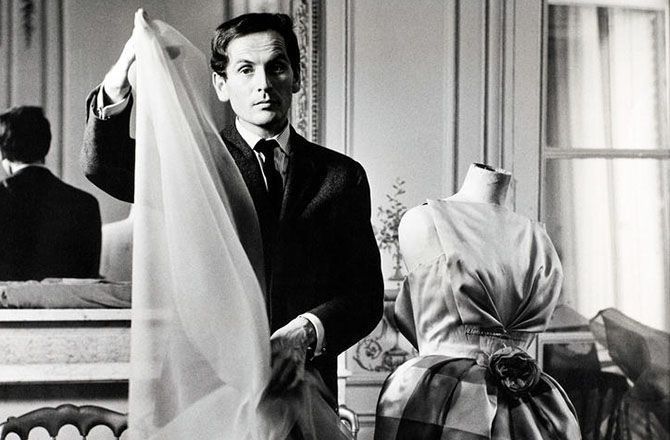
This name immediately evokes a cloud of mottled images, jerky fragments of that singular view of modernity. Pierre Cardin and the creation of a futuristic pop style literally cut out for the youth of the 60s. Pierre Cardin, and the appearance of geometric lines, hypnotic patterns, and silhouettes that seemed to have been drawn for life in orbit. Pierre Cardin, or the power of utopia, embodied in cosmic fashion. Pierre Cardin, or thousands of intricate items designed for the bon-vivant lifestyle.
“My thoughts have perpetually been in the future,” said the couturier, always ahead of his time, destined like all visionaries, to sometimes have their intuitions decried before being celebrated.
Pierre Cardin died on December 29, 2020, at the age of 98. He celebrated the 70th anniversary of his fashion house, based on the 10th Rue Richepanse (renamed Rue Chevalier de Saint-George) in the 8th arrondissement of Paris.The name from which he made world renowned brand was the French version of his name – Pietro Costante Carden. This is the name of a child born in the village of Veneto on July 2, 1922, and raised in central France by parents who fled fascist Italy.
Actor? Dancer? Couturier? After the war, young Pierre Cardin imagines that he can do it all, even when he commences his study as an accountant. Meeting a fortune teller changes everything. She not only predicts his fate, but also sends him to her friend who works in the fashion house of Jeanne Paquin. Pierre Cardin arrives in Paris in 1945, maintains to Paquin and there meets Jean Cocteau, who offers him to make costumes for his film “Beauty and the Beast”. He then rises through the ranks of Schiaparelli’s workshops and then becomes the first tailor of Christian Dior, who has just opened his house and is about to establish new canons of fashion through a revolution called New Look. In 1953, after devoting three years to theatrical costumes, Pierre Cardin debuted his first collection. The abstract silhouettes and sculptural cutouts are just one of the distinctive features. Couturier innovated on all fronts: he was the first to launch a men’s line in 1960, he offered his ready-made collections in a department store in 1962 (“I really believed in widespread distribution,” he would later say. “It is not a disgrace to leave the gold salons to go out on the street.”), organized international shows (on Red Square in Moscow, in the Forbidden City in Beijing…) and developed a global brand, printing his initials on an infinite number of items – from leather goods to furniture.
“I belong to the times of zazous, hippies, Saint-Germain-des-Pres, Beauvoir, Sartre and Greco. I am a dinosaur, but at the same time, the oldest couturier who manages his house, ” he rejoiced, relentlessly launching new projects in recent years. He had always been convinced that audacity was another name for modernity.
